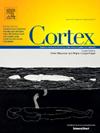Reduced susceptibility to experimentally-induced complex visual hallucinations with age
IF 3.3
2区 心理学
Q1 BEHAVIORAL SCIENCES
引用次数: 0
Abstract
Visual hallucinations occur across many clinical conditions, but can also be induced experimentally in healthy individuals, using high-frequency flicker (Ganzflicker) and sensory deprivation (Ganzfeld). It is unclear how hallucinatory proneness changes across the lifespan, with prior questionnaire-based studies showing mixed results. As factors such as multi-sensory acuity loss and relatively increased reliance on prior knowledge may increase as we age, and these are considered risk factors for hallucination proneness, we hypothesised that reported decreases in hallucinations might reflect underreporting due to stigma. We therefore sought to measure hallucination proneness in 44 healthy adults spanning the adult lifespan (younger age group; n = 22; age 19–39 years, mean 27.2 ± 5.5; older age group n = 22; age 59–79 years, mean 68.0 ± 5.8), quantifying the tendency to experience complex and simple hallucinations in an experimental environment designed to elicit hallucinations. We find that reports of complex hallucinations (those representing objects, scenes, etc) are lower in older adults than in younger adults, both in real time and retrospectively. None of our measured cognitive or sensory measures (visual acuity, contrast sensitivity, perceptual reorganisation, imagery vividness, memory inhibition, and suggestibility) mediate this relationship. We conclude that reduced complex hallucination proneness is likely to be a feature of typical ageing, and that experiencing hallucinations in older individuals may signal underlying pathology.
随着年龄的增长,对实验诱导的复杂视幻觉的易感性降低
视觉幻觉发生在许多临床条件下,但也可以通过实验在健康个体中诱导,使用高频闪烁(Ganzflicker)和感觉剥夺(Ganzfeld)。目前还不清楚幻觉倾向在整个生命周期中是如何变化的,之前基于问卷的研究显示了不同的结果。随着年龄的增长,多感官敏锐度丧失和对先验知识的依赖程度相对增加等因素可能会增加,而这些因素被认为是幻觉倾向的危险因素,我们假设报告的幻觉减少可能反映了由于耻辱感而漏报的情况。因此,我们试图测量44名健康成人的幻觉倾向(年轻年龄组,n = 22;年龄19-39岁,平均27.2±5.5;年长年龄组,n = 22;年龄59-79岁,平均68.0±5.8),量化在设计引起幻觉的实验环境中经历复杂和简单幻觉的倾向。我们发现,无论是实时的还是回顾性的,老年人报告的复杂幻觉(那些代表物体、场景等的幻觉)都比年轻人少。我们测量的认知或感官测量(视觉灵敏度、对比敏感度、知觉重组、图像生动度、记忆抑制和易受暗示)都没有调节这种关系。我们的结论是,复杂幻觉倾向的减少可能是典型的衰老特征,老年人出现幻觉可能是潜在病理的信号。
本文章由计算机程序翻译,如有差异,请以英文原文为准。
求助全文
约1分钟内获得全文
求助全文
来源期刊

Cortex
医学-行为科学
CiteScore
7.00
自引率
5.60%
发文量
250
审稿时长
74 days
期刊介绍:
CORTEX is an international journal devoted to the study of cognition and of the relationship between the nervous system and mental processes, particularly as these are reflected in the behaviour of patients with acquired brain lesions, normal volunteers, children with typical and atypical development, and in the activation of brain regions and systems as recorded by functional neuroimaging techniques. It was founded in 1964 by Ennio De Renzi.
 求助内容:
求助内容: 应助结果提醒方式:
应助结果提醒方式:


